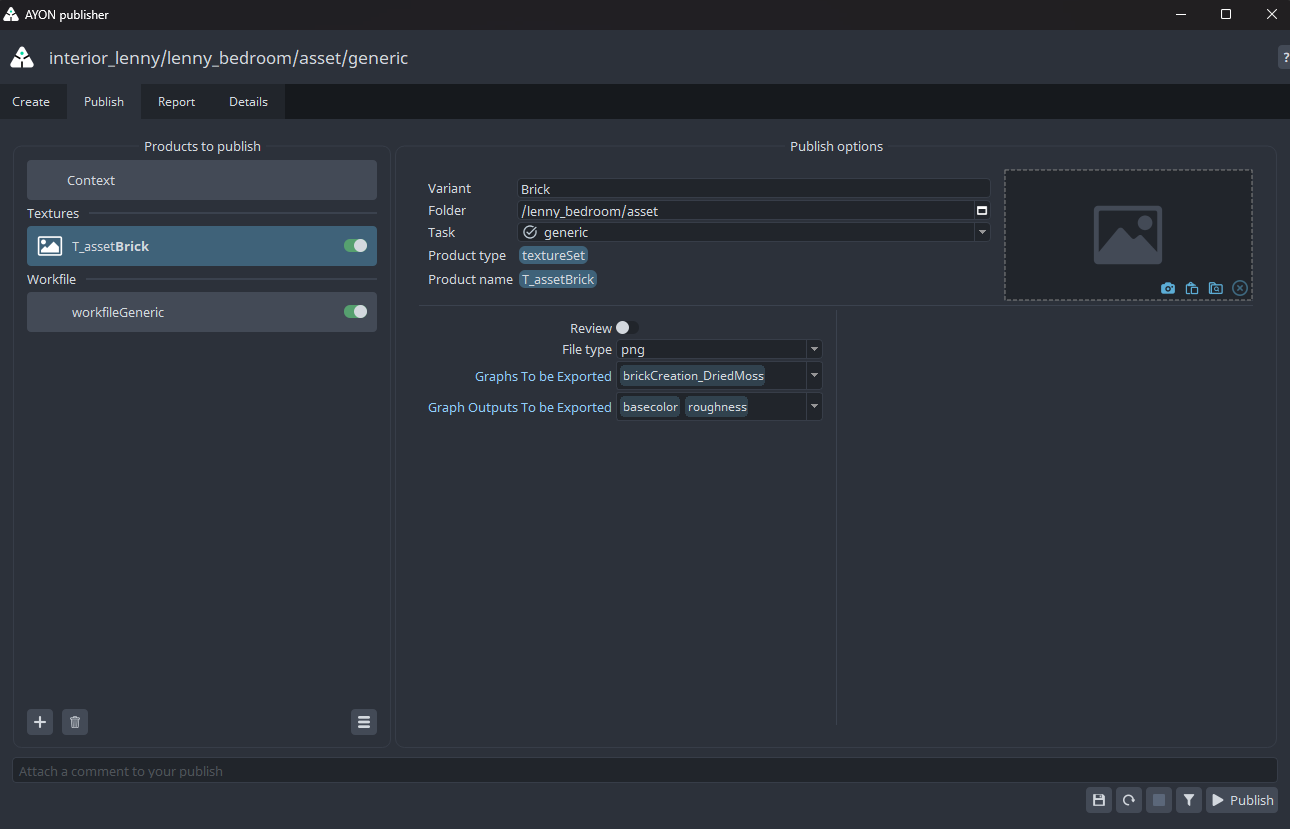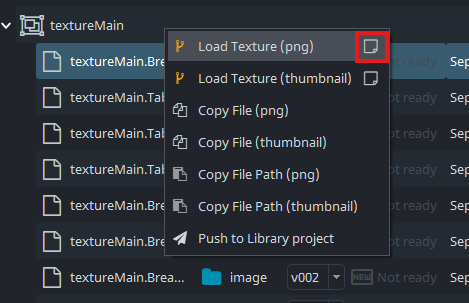Substance Designer Artist Docs
About Substance Designer Addon
The Substance Designer AYON integration lets you:
- Easily export your textures/SBSAR files as versioned publishes for others to load and update.
- Load your textures into resource folders in your package project and use them in your Substance Graphs.
Working with AYON in Substance Designer
Launch Designer via AYON Launcher
Once your admin configures AYON to work with Substance Designer, you'll find the Substance Designer icon in the launcher.

Initialize Workfile
Admins can configure the Substance Designer addon to automatically initialize a workfile when launching Designer from the launcher. If your admin has set it up, you won't need to create the Substance Graph yourself through File -> New -> Substance Graph...
For more info, see Substance Designer Project Templates.
Once the project is created with the template(s), a temp_ayon_package.sbs file is saved as a local temp file. Make sure to use the Work Files tool to save your files; otherwise, your work inside temp_ayon_package.sbs will be lost if you close the Substance Designer application.
 A workfile with example template.
A workfile with example template.
AYON Metadata
When opening an existing Substance Graph used to publish textures to AYON, you'll find the related data embedded in the package from which the graph inherits.
Make sure you don't remove AYON-related data in the metadata, or you could lose all information needed for loading or publishing through AYON.

AYON Global Tools
You can access AYON global tools in Designer through the AYON menu.
Create and Publish Products
Publishing Textures
To publish textures, open the graph(s) inherited from the package you want to publish. Then, navigate to AYON -> Create to create a texture instance. You can choose which graphs and outputs you want to export.

The Texture Set instance generates a publish for each output map per graph, as defined in the Substance Designer's template during project creation. When publishing the default Substance Designer's PBR template with the variant Main, six instances will be published with the following variants:
- Main.basecolor
- Main.normal
- Main.roughness
- Main.metallic
- Main.height
- Main.ambientocclusion
The bold output map name for the publish is based on the string pulled from the default pattern set in export presets. So $(graph)_$(identifier) becomes basecolor.
Publishing SBSAR
To publish SBSAR files, open the graph(s) inherited from the package you want to publish. Then, go to AYON -> Create to create an SBSAR instance. Once you hit Publish, the SBSAR is published to AYON.
Loading Products
You can go to AYON -> Load to load products. Any loaded product will be added to the resources folder (named {project_name}_resources) in the package.
Loading Textures
You can load textures via the Load Texture loader. You can choose to link or import resources by clicking the small memo (see the red frame in the screenshot below) before importing the texture.
| Texture Loader | Texture Loader Options |
|---|---|
 |
Manage Loaded Products
You can go to AYON -> Manage to manage the version of loaded products. For example, in the manage window, right-click your loaded texture and select update to latest to update it to the latest version.
Troubleshooting
Can't See the AYON Menu?
If you're unable to see the AYON top-level menu in Substance Designer, make sure you have launched Substance Designer through AYON and that the AYON Integration plug-in is loaded inside Substance Designer: Tools > Plugins_Manager > ayon_plugin

Substance Designer + Steam
Running the Steam version of Substance Designer within AYON requires you to close the Steam executable before launching Substance Designer through AYON. Otherwise, the Substance Designer process is launched using Steam's existing environment and will not be able to pick up the pipeline integration. This appears to be a limitation of how Steam works.

